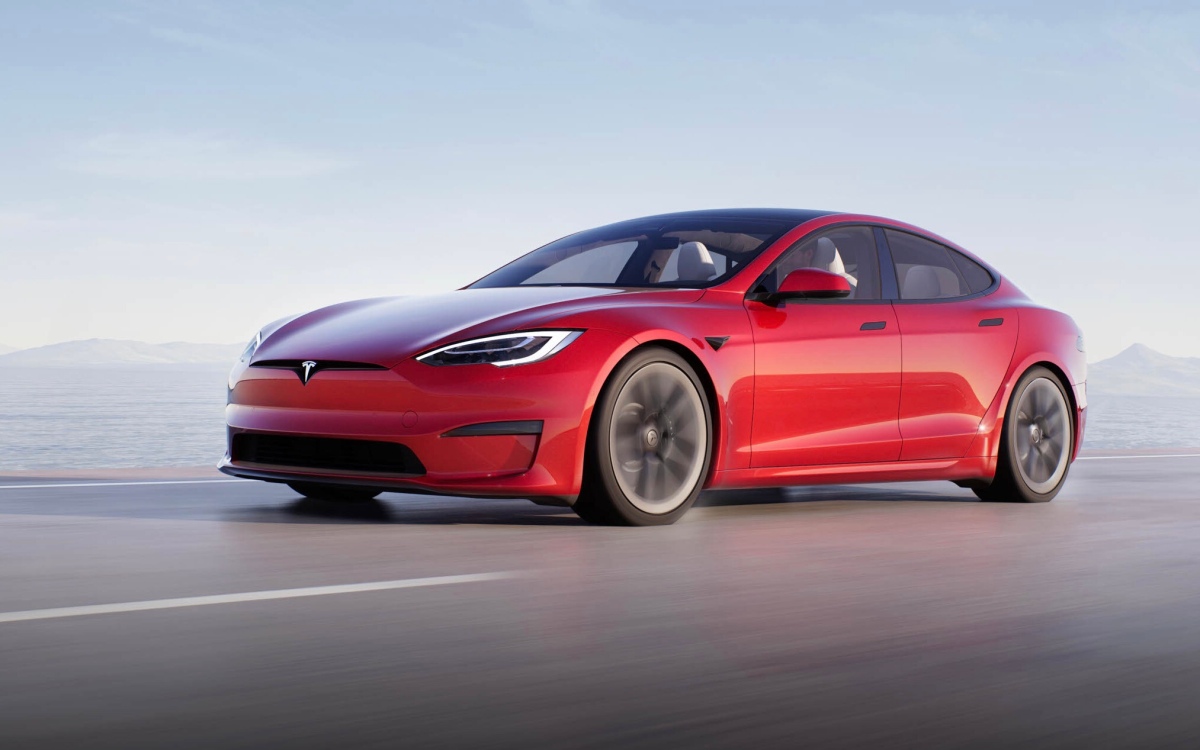Here's the graph and video for the first major charge I did on my Plaid--overall, very impressed, especially given how hot it was. The thermal mgmt system on the new cars is a BEAST--seeing with the charging and dung back-to-back 0-60 runs.


You can install our site as a web app on your iOS device by utilizing the Add to Home Screen feature in Safari. Please see this thread for more details on this.
Note: This feature may not be available in some browsers.


 electricrevs.com
electricrevs.com
Or if there is a boost converter in the Plaid Model S to up the voltage like Porsche uses in the Taycan. (and the voltage reported is after the boost not directly from the Supercharger.)This is an article I just wrote about charging the new battery pack on V2 Superchargers that includes graphs supplied by @omarsultan.

Can the Model S Plaid use V2 Superchargers?
The sort of people who read the fine-print in the owner’s manual, and the specification nameplates on charging hardware cabinets, may wonder if the new Tesla Model S Plaid can fully charge at…electricrevs.com
Yeah, I should have mentioned that as a possibility but it seems like a significant expense for a modest voltage boost. Not impossible as a transition strategy. It’s a mystery.Or if there is a boost converter in the Plaid Model S to up the voltage like Porsche uses in the Taycan. (and the voltage reported is after the boost not directly from the Supercharger.)
@wk057 had tweeted about this issue and that maybe Tesla was using "trickery". The question is that on the Supercharger side or is it on the vehicle side.Yeah, I should have mentioned that as a possibility but it seems like a significant expense for a modest voltage boost. Not impossible as a transition strategy. It’s a mystery.
Something possibly somewhat analogous happened with the old squat BTC CCS/CHAdeMO DC chargers often installed at early EVgo sites. They were initially running at 100A peak which matched their affixed nameplate specs but some were silently upgraded to 125A later on. Did they get new charger circuit board upgrades or were they latently capable of being pushed harder? I’ve never bothered to find out.@wk057 had tweeted about this issue and that maybe Tesla was using "trickery". The question is that on the Supercharger side or is it on the vehicle side.
There’s does seem to be something strange going on here. The @omarsultan V2 Supercharger data indicated 455v at 80% SoC at 0.7C (~70/100kW). A similar example from Model 3 at 0.5C and 80% is 400V. (Ref: Bjorn video @ 6:00)This is an article I just wrote about charging the new battery pack on V2 Superchargers that includes graphs supplied by @omarsultan.

Can the Model S Plaid use V2 Superchargers?
The sort of people who read the fine-print in the owner’s manual, and the specification nameplates on charging hardware cabinets, may wonder if the new Tesla Model S Plaid can fully charge at…electricrevs.com
You’re good! Um, yeah, that’s the topic of my pending follow-up article….There’s does seem to be something strange going on here. The @omarsultan V2 Supercharger data indicated 455v at 80% SoC at 0.7C (~70/100kW). A similar example from Model 3 at 0.5C and 80% is 400V. (Ref: Bjorn video @ 6:00)
That would seem to indicate a max voltage for Model S at ~458V, which is of course inconsistent with the OM data of 450V nominal. The equivalent max voltage for a 96s Model 3 pack is ~403V. The Model S pack would need to be 109s to make that work and would have a nominal voltage of 403V [109*3.7]. If the Model S pack is 450V nominal, it should be at about 507V while charging at 0.7C and 80% SOC. Instead, it was almost precisely 10% lower at 455V.
Did all three sessions end at 80% SOC with near 70kW power? It’s peculiar that Folsom and Elk Grove, both V3 sites, have slightly higher voltage. Did they have higher power too?Here is the voltage for all three SC sessions:
View attachment 675677View attachment 675678View attachment 675679
8 year/150K miles -- same as pre-refreshIs this the one million mile warranty battery pack? If so does it have the 8 year warranty limit or is it unlimited
No, Rocklin ended at 80% -- site was busy.Did all three sessions end at 80% SOC with near 70kW power? It’s peculiar that Folsom and Elk Grove, both V3 sites, have slightly higher voltage. Did they have higher power too?
Other than that Owner’s Manual inconsistency issue, do we have any reason to think it isn’t just a 108s pack? (I assume 108s makes more sense since it is divisible by 6…or 4…while 109 is a prime number…I guess the series modules don’t have to have the same number of series cells though so maybe it does not matter that 109 is prime.)which is of course inconsistent with the OM data of 450V nominal.
The warranty isn't a million miles. Never will be.Is this the one million mile warranty battery pack? If so does it have the 8 year warranty limit or is it unlimited
How much do you estimate a new battery pack will cost/Anyone think they'll switch the LR to the 4680 cells in 2022? I'm getting close to an upgrade (I've been driving my 2014 for 7 years now). Would LOVE a 500-mile range LR. Acceleration is fast enough, don't need to spend the extra cash for Plaid+.


